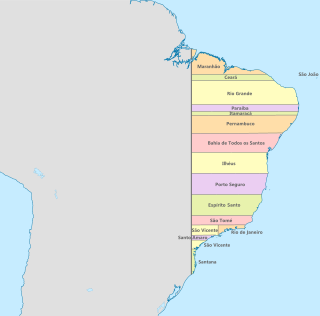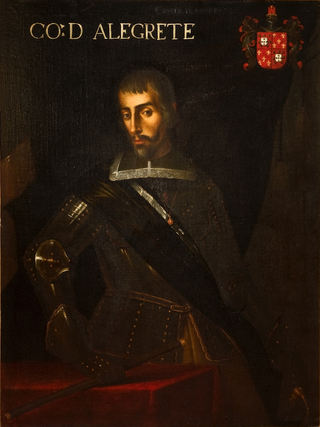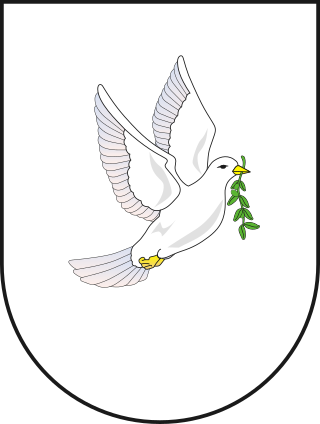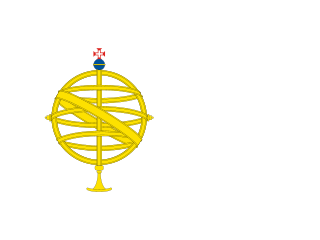
Portuguese colonization of the Americas constituted territories in the Americas belonging to the Kingdom of Portugal. Portugal was the leading country in the European exploration of the world in the 15th century. The Treaty of Tordesillas in 1494 divided the Earth outside Europe into Castilian and Portuguese global territorial hemispheres for exclusive conquest and colonization. Portugal colonized parts of South America, but also made some unsuccessful attempts to colonize North America.

The federative units of Brazil are subnational entities with a certain degree of autonomy and endowed with their own government and constitution, which together form the Federative Republic of Brazil. There are 26 states and one federal district. The states are generally based on historical, conventional borders which have developed over time. The states are divided into municipalities, while the Federal District assumes the competences of both a state and a municipality.

Colonial Brazil comprises the period from 1500, with the arrival of the Portuguese, until 1815, when Brazil was elevated to a kingdom in union with Portugal as the United Kingdom of Portugal, Brazil and the Algarves. During the early 300 years of Brazilian colonial history, the economic exploitation of the territory was based first on brazilwood extraction, which gave the territory its name; sugar production ; and finally on gold and diamond mining. Slaves, especially those brought from Africa, provided most of the work force of the Brazilian export economy after a brief period of Indian slavery to cut brazilwood.

The Captaincies of Brazil were captaincies of the Portuguese Empire, administrative divisions and hereditary fiefs of Portugal in the colony of Terra de Santa Cruz, later called Brazil, on the Atlantic coast of northeastern South America. Each was granted to a single donee, a Portuguese nobleman who was given the title captain General.
The Brazilian Navy is the naval service branch of the Brazilian Armed Forces, responsible for conducting naval operations. The Brazilian Navy is the largest navy in Latin America and the second largest navy in the Americas after the United States Navy.
A governorate or governate is an administrative division of a state that is headed by a governor. As English-speaking nations tend to call regions administered by governors either states or provinces, the term governorate is often used in translation from non-English-speaking administrations.

Nova Iguaçu is a municipality in Rio de Janeiro state in Brazil.

Tomé de Sousa (1503–1579) was the first governor-general of the Portuguese colony of Brazil from 1549 until 1553. He was a nobleman and soldier born in Rates, Póvoa de Varzim. Sousa was born a noble and participated in military expeditions in Africa, fought the Moors and commanded the nau Conceição to Portuguese India, part of the armada of Fernão de Andrade.

Matias de Albuquerque, the first and only Count of Alegrete, was a Portuguese colonial administrator and soldier. He was nicknamed "Hero of Two Continents" for his performance, beginning in 1624, against the Dutch invaders of colonial Brazil and for his role, beginning in 1641, as a general in Portugal, fighting for king John IV during the Portuguese Restoration War, where he won the battle of Montijo over the Spaniards in 1644. For this victory he was rewarded the title of Count of Alegrete by the king.
The Battle of Pirajá was a battle fought as part of the Independence of Bahia and more broadly, as part of the War of Independence of Brazil. It was fought in Pirajá, now a neighborhood of the city of Salvador, Bahia on November 8, 1822. The Battle of Pirajá was the largest engagement in the fight for the independence of Bahia, involving approximately 10,000 troops.

The Captaincy of Pernambuco or New Lusitania was a hereditary land grant and administrative subdivision of northern Portuguese Brazil during the colonial period from the early sixteenth century until Brazilian independence. At the time of the Independence of Brazil, it became a province of United Kingdom of Portugal, Brazil and the Algarves. Captaincies were originally horizontal tracts of land (generally) 50 leagues wide extending from the Atlantic Ocean to the Tordesillas meridian.

The Brazilian War of Independence, was waged between the newly independent Brazilian Empire and the United Kingdom of Portugal, Brazil and the Algarves, which had just undergone the Liberal Revolution of 1820. It lasted from February 1822, when the first skirmishes took place, to March 1824, with the surrender of the Portuguese garrison in Montevideo. The war was fought on land and sea and involved both regular forces and civilian militia. Land and naval battles took place in the territories of Bahia, Cisplatina and Rio de Janeiro provinces, the vice-kingdom of Grão-Pará, and in Maranhão and Pernambuco, which today are part of Ceará, Piauí and Rio Grande do Norte states.

The State of Brazil was one of the states of the Portuguese Empire, in the Americas during the period of Colonial Brazil.

The Governorate General of Brazil was a colonial administration of the Portuguese Empire in present-day Brazil. A governorate was equivalent in status to a viceroyalty, though the title viceroy didn't come into use until the early 18th century. They were ruled by a Governor General who reported to the Crown. The Governor General had direct authority over the constituent royal captaincies, and nominal but ill-defined authority over the donatary captaincies. One captaincy, that of Duarte Coelho in Pernambuco, was exempt by royal decree from the authority of the Governors General.

The Governorate General of Bahia was a colonial administration of the Portuguese Empire.

The Neutral Municipality, more formally known in the imperial era as the Neutral Municipality of the Court, in reference to the Imperial Court, was an administrative unit created in the Empire of Brazil, that existed in the territory corresponding to the current location of the municipality of Rio de Janeiro between August 12, 1834 and November 15, 1889, when was proclaimed the republic in Brazil. It only officially ceased to exist with the promulgation of the 1891 Constitution. Under the republican constitution, this administrative unit became the Federal District in 1891, which was abolished and transformed into the state of Guanabara in 1960, and later, with the fusion of this with the state of Rio de Janeiro in 1975.

The Captaincy of Bahia, fully the Captaincy of the Bay of All Saints, was a captaincy of Portuguese Brazil.

Forte de Santo Antônio da Barra is a fort located in Salvador, Bahia, Brazil. It was constructed to guard the entrance to the Bay of All Saints, during the time of the Portuguese Empire. The first Portuguese fortification erected in Bahia was likely built in 1501, in the same area now occupied by the Forte de Santo Antônio da Barra. The foundation stone of that first fortification was placed in an area called Ponta do Padrão, now known as the Largo do Farol da Barra, the broad public square in front of the fort. The fort also houses the 22 metres (72 ft)-high Barra Lighthouse and the Nautical Museum of Bahia. The Santo Antônio da Barra Fort is protected as a historic structures by the National Institute of Historic and Artistic Heritage.

The Royal Captaincy of São Paulo was one of the captaincies of Colonial Brazil. It received this name on December 2, 1720, when John V of Portugal created the Captaincy of Minas Gerais from the division of the Captaincy of São Paulo and Minas de Ouro, which had been created in 1709 with the purchase by the Portuguese crown of the Captaincy of São Vicente.

The Captaincy of Santa Catarina was an administrative division of colonial Brazil created on August 11, 1738, in the southernmost territories of the Captaincy of São Paulo. The government was officially installed on March 7, 1739, with the first governor being José da Silva Pais.


















